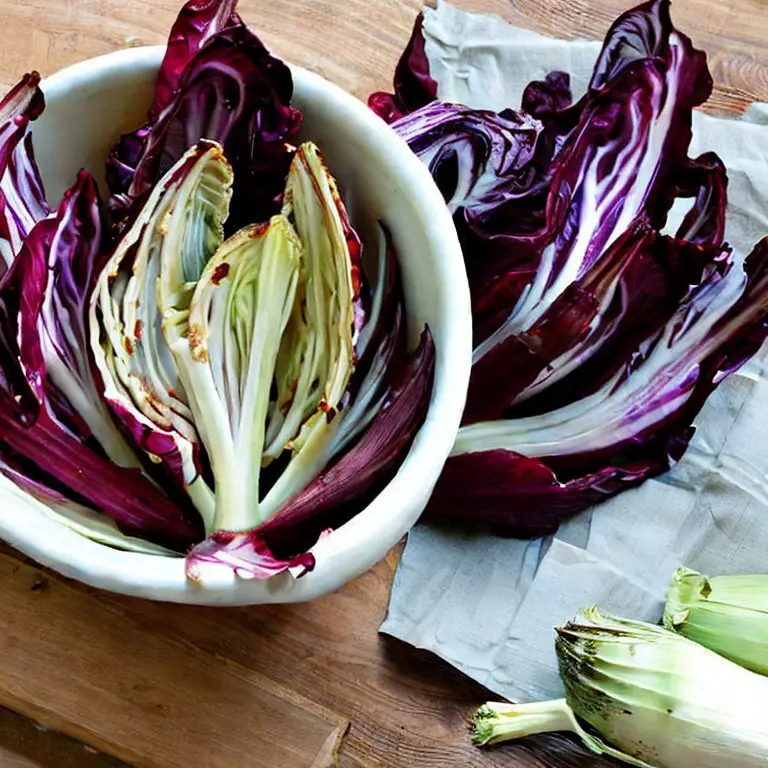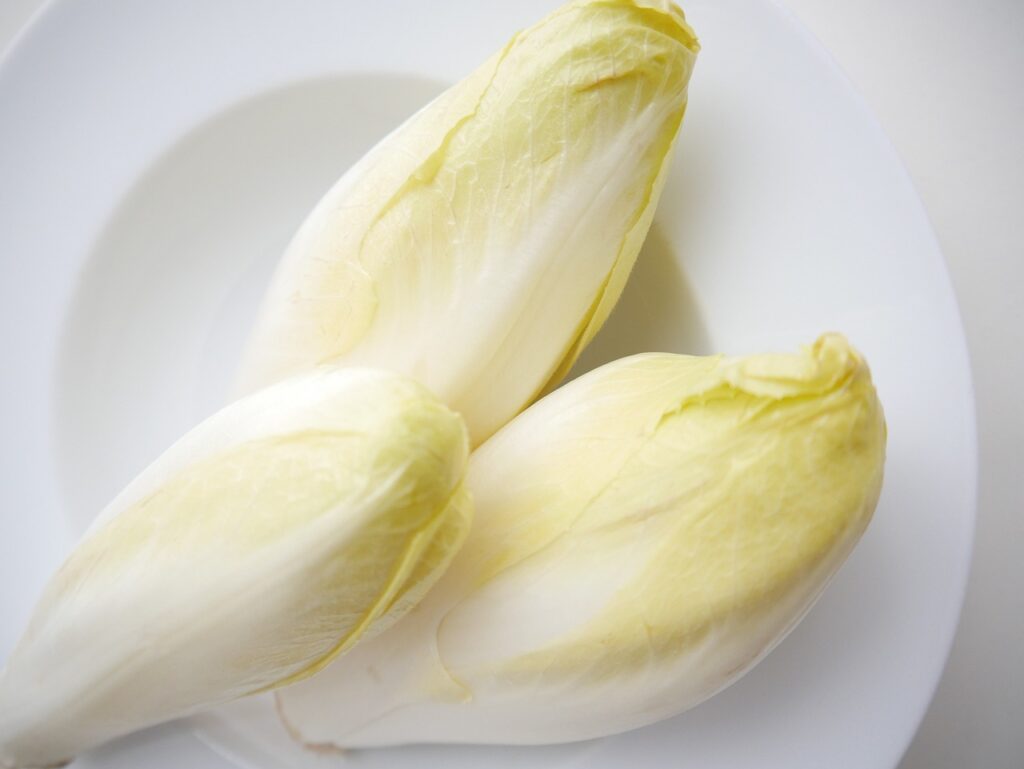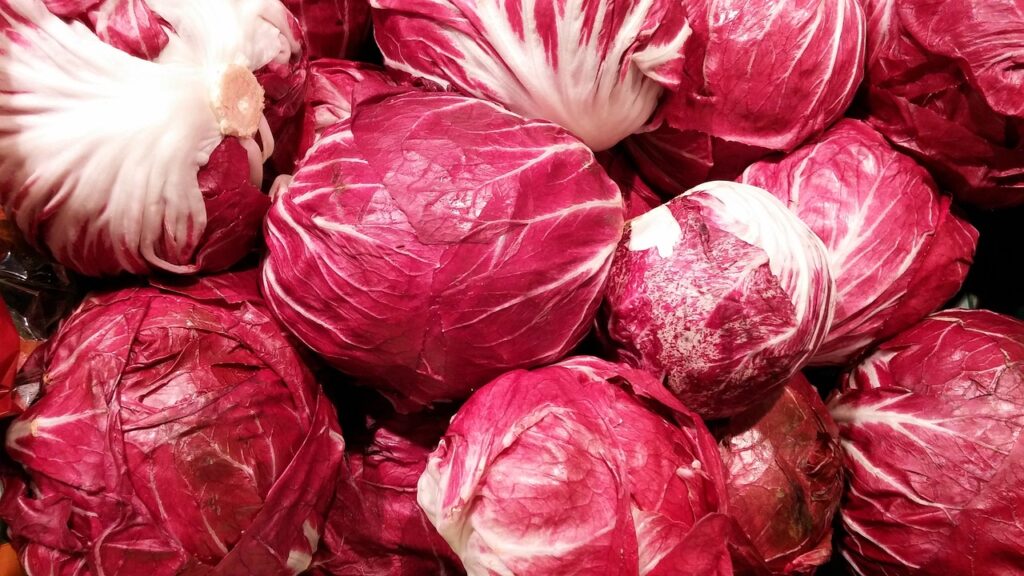
Chicory and radicchio are two types of plants that are often confused for one another. Both are members of the daisy family and are related to endive and escarole. While they may have similar nutritional content and uses, there are distinct differences between the two.
In this post, we will explore the differences between chicory and radicchio, including their growth, flavor, and uses in cooking.
Is Chicory the Same as Radicchio?
Chicory and radicchio are both types of leafy green vegetables that belong to the Compositae family (or Daisy family) and are related to endive and escarole. but they are not the same thing. Because they are part of the same family, they are closely related with many similarities. But there are some key differences we will look at next. (See also Chicory vs Endive)
Chicory vs Radicchio
While they are closely related, there are a few key differences between chicory and radicchio:
- Appearance: Chicory has a long, narrow stem and dark green leaves that are slightly bitter in taste. Radicchio, on the other hand, has a short, round stem and dark red or purple leaves that are more bitter than chicory.
- Growing conditions: Chicory is grown outdoors in the ground, while radicchio is grown in a controlled environment, such as in a greenhouse.
- Flavor: Chicory has a slightly bitter flavor, while radicchio has a much more bitter and slightly sweet flavor.
- Nutritional content: Both chicory and radicchio are rich in nutrients, including vitamins A, C, and K, as well as folate, potassium, and manganese. However, radicchio tends to have slightly more nutrients than chicory, particularly in terms of vitamin C and folate.
Chicory is a perennial plant that is native to Europe and Asia. It has long, deep-blue or purple flowers and a bitter, slightly nutty flavor. The leaves of the chicory plant can be eaten raw or cooked, and are often used in salads. Chicory root is also used to make a coffee substitute and as a natural sweetener.

Radicchio, on the other hand, is a type of chicory that is grown specifically for its leaves, which are typically red or purple in color. The leaves have a bitter, slightly spicy flavor and are often used in salads or as a garnish. Radicchio is a type of chicory that is grown specifically for its leaves. The leaves are usually red or purple, and they have a bitter, slightly spicy flavor. They are often used in salads or as a garnish.

One of the main differences between chicory and radicchio is in the way they are grown. Chicory is grown as a perennial plant, meaning it comes back year after year, whereas radicchio is grown as an annual plant, meaning it needs to be replanted each year. Additionally, chicory is typically grown for its roots, while radicchio is grown for its leaves.
Another difference is in the way they are used in cooking. Both chicory and radicchio can be eaten raw or cooked, and can be used in a variety of dishes, such as salads, soups, and sandwiches. But chicory is often used in salads and sandwiches, while radicchio is usually used as a garnish or as a salad ingredient. Chicory is also sometimes used as a coffee substitute, while radicchio is not. (You can find a salad recipe for chicory at Chicory and Endive Salad Recipe)
They are both low in calories and can be a good source of fiber and nutrients, making them a healthy addition to any diet. However, due to their bitter flavor, they may not be to everyone’s taste. If you are trying chicory or radicchio for the first time, it may be best to start with a small amount and gradually increase it to see how your taste buds adjust.
Final Thoughts
Overall, while chicory and radicchio are closely related, they are distinct plants with different uses and characteristics. Chicory is a perennial plant with a bitter, slightly nutty flavor that is often used in salads and sandwiches, while radicchio is an annual plant with a bitter, slightly spicy flavor that is used as a garnish or salad ingredient.
While they may be closely related, understanding the differences between the two can help you choose the right ingredient for your recipe. Whether you’re looking to add a bit of bitterness to your salad or want to use a natural sweetener in your coffee, chicory and radicchio are both versatile plants that can add unique flavor and nutrition to your meals.
Lance has been passionate about the plant-based diet and we have been following a whole food plant-based diet for over 5 years. We focus on health, natural healing, weight management, animal rights, and the health of the planet and environment by focusing on whole plant-based foods and sustainable practices.
Learn more at the About Me page and follow on social media at the links below.






